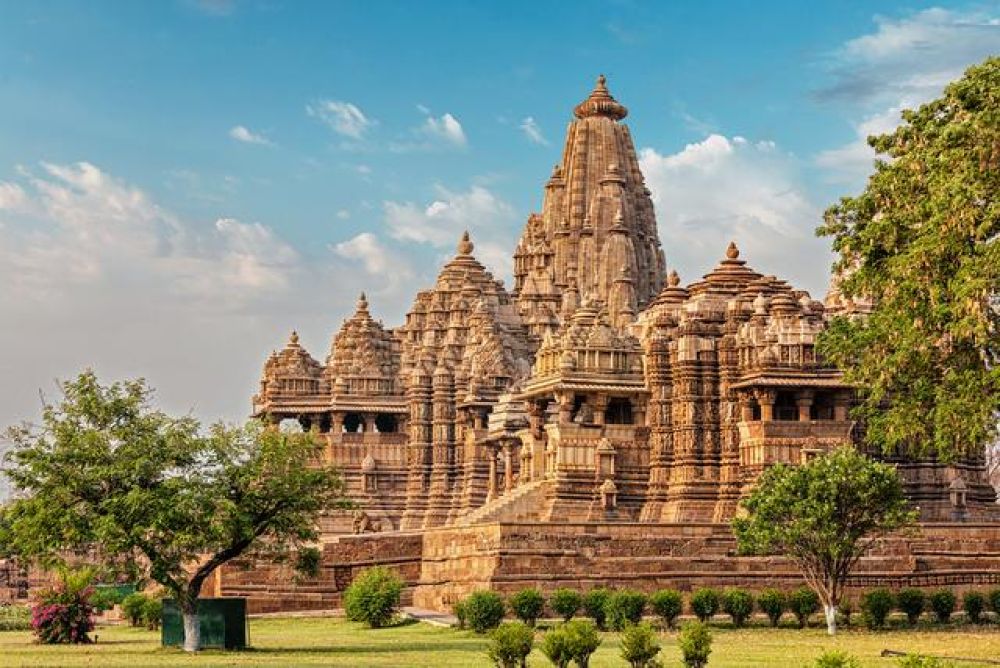

The Kandariya Mahadeva Temple, located in Khajuraho, Madhya Pradesh, India, is a significant masterpiece of Indian architecture and one of the most prominent tourist destinations in the country. The temple forms part of the Khajuraho Group of Monuments, a UNESCO World Heritage Site renowned for its remarkable collection of medieval temples adorned with intricate erotic sculptures.
The history of tourism at the Kandariya Mahadeva Temple is closely linked to the history of the temple itself. Built around 1025-1050 CE during the reign of the Chandela dynasty, the temple is dedicated to Lord Shiva and is the largest among Khajuraho's Western Group of Temples. The temple, along with others in Khajuraho, was rediscovered by British engineer T.S. Burt in the 1830s, after which it captured the attention of the broader international community.
Initially, the remote location of the Khajuraho temples made them difficult to access for tourists. However, as the historical and cultural significance of the temples gained recognition, the Indian government and various international organizations started taking steps to preserve the site and develop the necessary infrastructure to promote tourism.
By the second half of the 20th century, Khajuraho emerged as a popular tourist destination for both domestic and international tourists drawn to its architectural splendor and intricate sculptures. The yearly Khajuraho Dance Festival, which started in 1975, further enhanced its appeal, showcasing classical Indian dances right beside the temples.
Today, Kandariya Mahadeva Temple benefits from the broader trend of cultural and heritage tourism. Tourists from around the world flock to admire its architectural brilliance, aesthetic appeal, and the skillfulness of its stone carvings. Recent developments in the area include improved facilities for tourists, such as better accommodation options, organized tours, and informative centers that educate visitors about the temple's history and significance.
The site has also embraced modern technology; virtual tours and augmented reality applications have been developed to offer a more immersive experience to those who cannot visit in person. Local authorities continuously work towards balanced tourism development to ensure the conservation of the temple, while still allowing visitors to experience its grandeur fully.
In conclusion, the Kandariya Mahadeva Temple's rich history and its ongoing appeal as a profound reflection of India's cultural heritage continue to sustain its status as an essential destination for tourists seeking historical and spiritual enrichment.